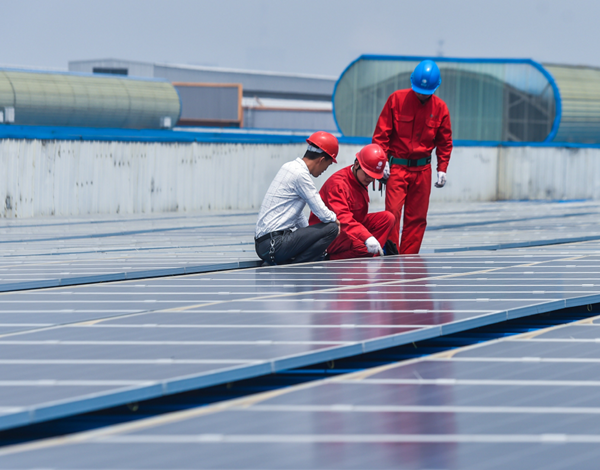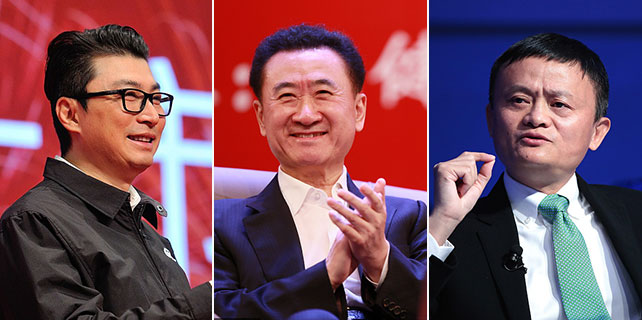China pushes for global energy network to power B&R Initiative
 |
|
Workers check the photovoltaic panels on the roofs of a factory in Changxing county on April 20. The county has vigorously supported development of green energy. Xu Yu / Xinhua |
In the not-too-distant future, winds from the North Pole could power neon lights in Beijing, while solar energy collected in equatorial regions will propel electric cars in Marrakesh. Though it sounds like science fiction, this soon-to-be reality is the result of an ambitious energy network plan.
As the world's biggest energy consumer and fastest growing non-fossil fuel market, China is pushing for global energy interconnection (GEI), an integrated, smart and clean grid to revolutionize lagging energy infrastructure.
The plan, proposed nearly two years ago, will contribute to the revival of the ancient trade routes of the Belt and Road Initiative.
For five years, a 500-kilovolt converter station towering on the China-Russia border has steadily transmitted hydroelectricity from the other side to China's northeastern regions.
Located in Heihe City, Heilongjiang province, the project, the largest of its kind in China, is helping the transformation of the country's industrial heartland, with a stable flow of cost-efficient and pollution-free power supply from Russia. Greenhouse gas emissions are being reduced and economic ties have become closer.
It not only represents reciprocal cooperation between two complementary economies but a new effort to overhaul localized and backward power generation and transmission globally, which have been challenged by regional energy imbalance, environmental disruption and climate change.
The Chinese leadership suggested at the UN Sustainable Development Summit in September 2015 to discuss establishing the GEI to meet power demand with clean and green alternatives. “It pointed the direction and path for a global energy revolution,” renowned Chinese economist Li Yining said.
Half a year later, the Global Energy Interconnection Development and Cooperation Organization (GEIDCO) was founded in Beijing to promote the proposal. By April, it had gathered 274 members from 22 countries and regions covering five continents.
GEIDCO secretary-general Wang Yimin said the GEI is a platform that connects electric grids around the world to facilitate extensive development, deployment and utilization of clean energy, with ultra-high voltage (UHV) transmission technology as the backbone.
Experts predict the GEI will attract more than $50 trillion of investment, serving as a new engine for global economic growth. Emerging industries of high-tech manufacturing, new energy and materials, and electric vehicles will be boosted.
UN Secretary-General Antonio Guterres has said the GEI should be incorporated into the 2030 Agenda for Sustainable Development.
GEIDCO plans to put intercontinental grids in place by 2050, after transnational grids on each continent are completed by 2030, and countrywide grids by 2020.
Xinhua
















